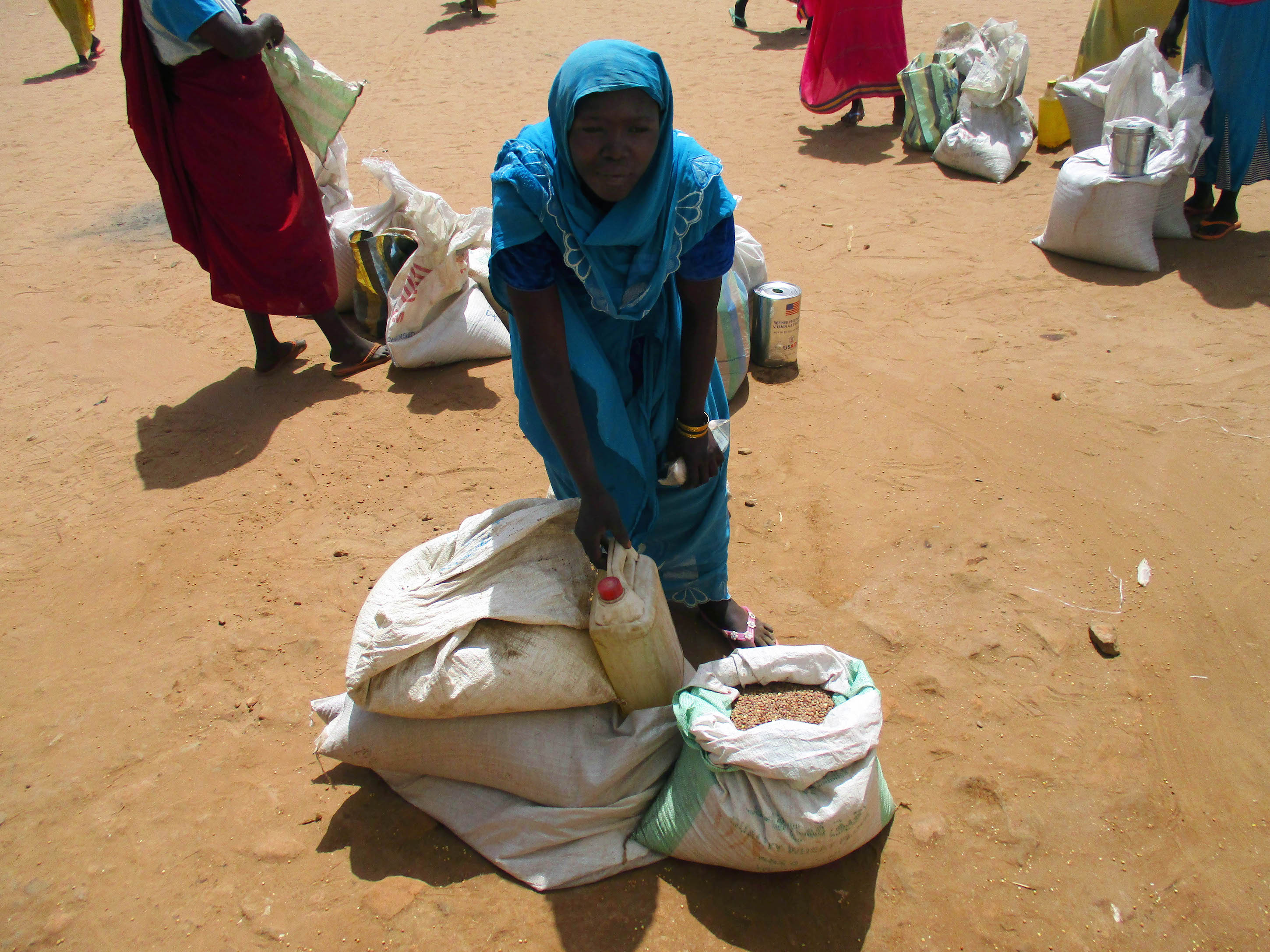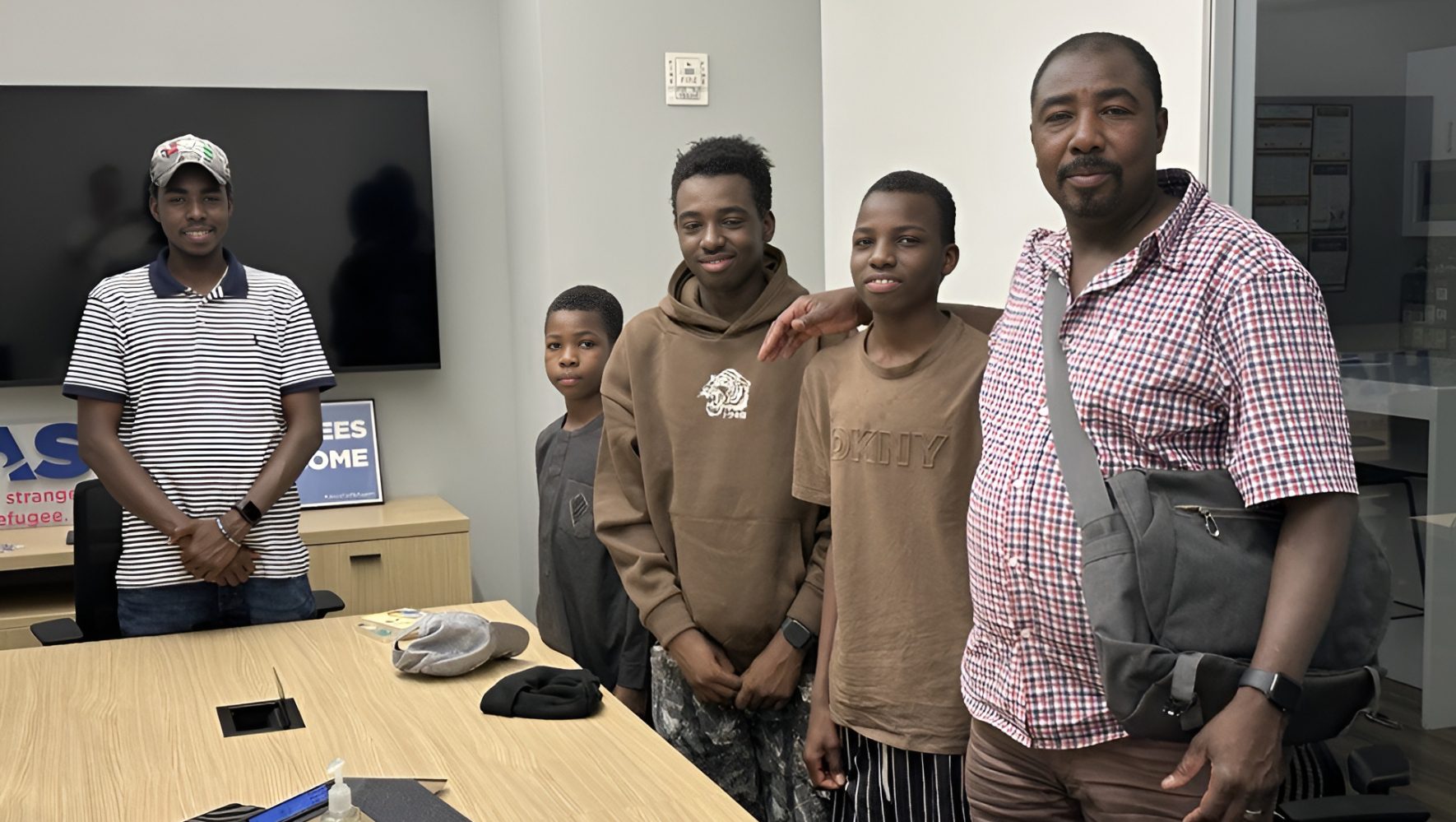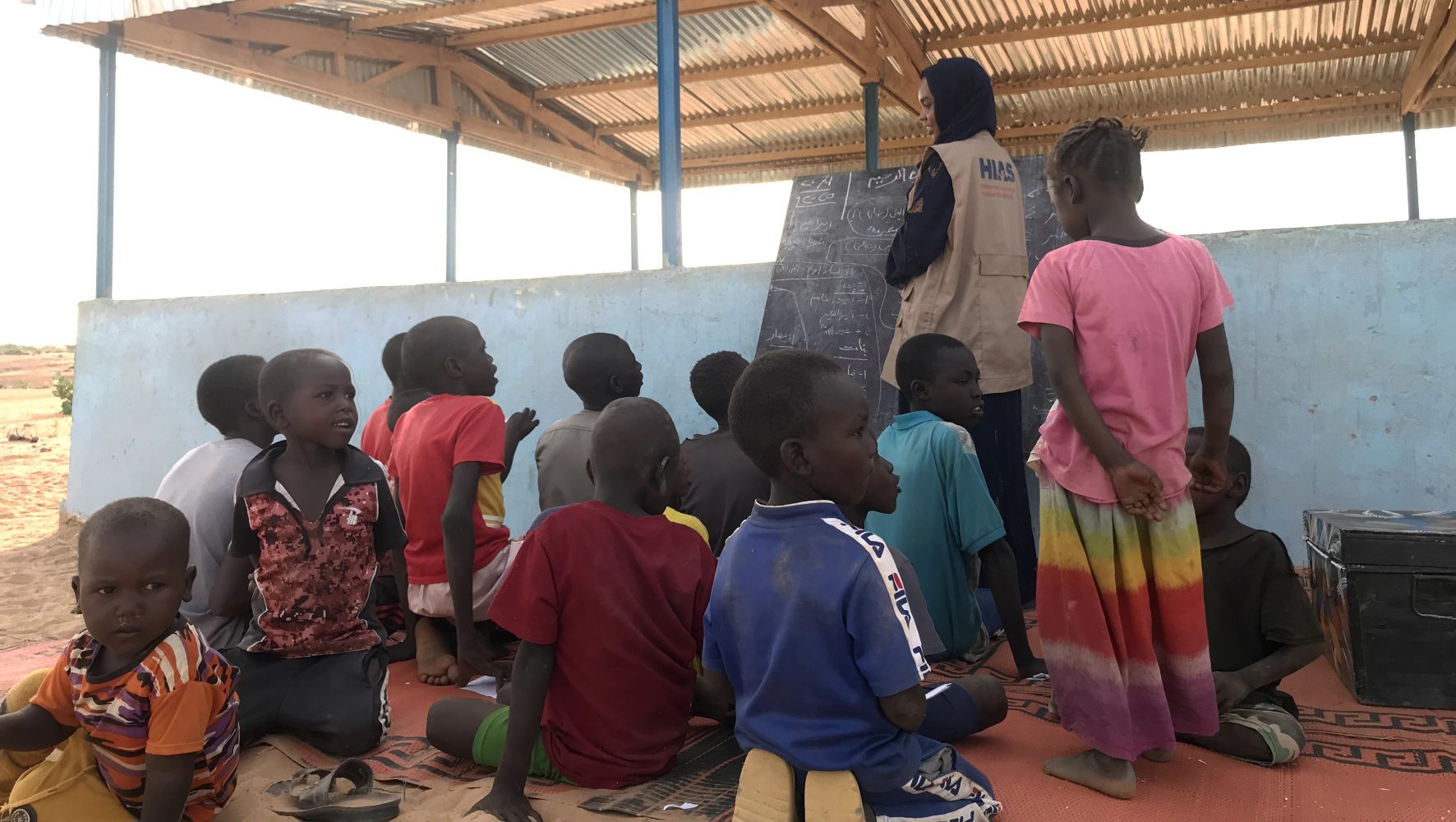Slow Motion Crisis: Chad’s Forgotten Refugees
By Rachel Nusbaum, HIAS.org
Mar 03, 2016

A woman collects the rations meant to last her family of eleven for a full month. The larger sack contains cereals and peas. The small sacks are filled with a corn soya blend for making flour, and the jug contains oil. Djabal refugee camp, Chad. February 2016.
(HIAS Chad)
With more than 60 million people displaced worldwide, global relief efforts and public attention have been stretched thin. The world, it seems, can focus only on so many refugees – and only for so long.
But just because a region doesn’t make the headlines doesn’t mean the needs there aren’t dire. In fact, lack of attention can make it harder for refugees to get the assistance they need. The world moves on, and aid agencies turn their attention to the next crisis, not because the others have been solved but simply because there is no one else to put out these new fires.
Such is the case in Chad, a landlocked country that the World Food Program describes as “suffering from chronic food insecurity.” The Global Hunger Index classifies the situation facing the broader population of Chad as “alarming”. In their 2015 ranking, which compares the hunger issues in 117 countries, Chad was second only to the Central African Republic.
Chad is currently home to nearly half a million refugees and asylum seekers. The vast majority are from Sudan, although a significant number are from the Central African Republic. Many have lived as refugees in Chad for over a decade, and it is uncertain when or if they will ever be able to return home. Children have been born here, too, proof that life goes on amid even the harshest of circumstances.
And the challenges continue to mount for Chad’s refugees. As funds continue to be stretched thin in 2016, the World Food Program was forced to scale back its food assistance to refugees there. “The amount of food that they were given before was not even enough to last them one month. And now that has been drastically reduced,” says Joyce Kanja, Director of HIAS Chad.
According to the World Food Program, each refugee in Chad currently receives “only about 39 percent of the generally recommended minimum daily intake of 2,100 calories.” The reduced rations, meant to feed refugees for a month, don’t even last a full week. “That is how sad it is,” says Kanja.
HIAS distributes food on behalf of the World Food Program and UNHCR in two of the twelve refugee camps in Chad, Djabal and Goz Amir, which together hold around 50,000 men, women and children. HIAS also distributes food at a smaller site, Kerfi, which is more like a village and holds a little over a thousand people.
Our team in Chad also delivers food in eleven camps to those who are unable to pick it up: the sick, the handicapped and the elderly. Kanja and her team thus have very direct relationships with Chad’s most vulnerable refugees. “When people are angry, or suffering, we are the first people who come into contact with them. So we get it firsthand. We’re face to face with these problems — seeing people going home without food,” says Kanja.
They often go door-to-door, doing home visits with refugees. Kanja says that now, during these visits, they are finding people who have not had enough to eat for days. People who come to them for therapy and counseling (as refugees, many have survived torture, sexual violence and other trauma) arrive complaining of headaches, illness and depression simply from the lack of food.
While much of the world's attention has shifted elsewhere, the refugees of Chad are in crisis. Their suffering is acute and largely unseen, but HIAS' dedicated staff are still there, doing what they can.
Click here to help support HIAS’ work in Chad and around the world. And watch this space for more reports from the field.


